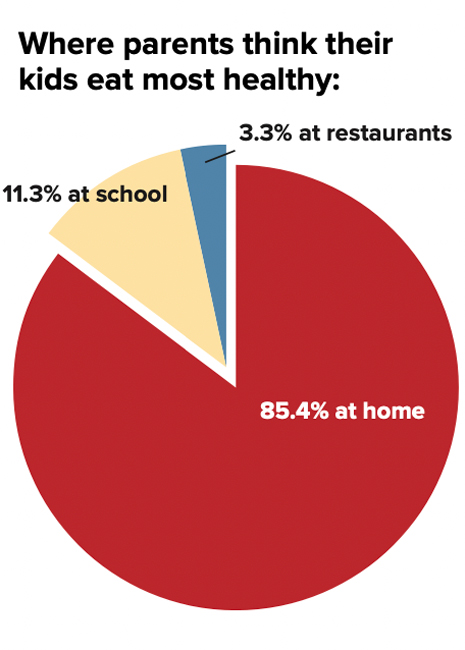Forward momentum on the school foodservice agenda continues to play out.
New Rules
On July 1, 2022, the USDA’s proposed rulemaking regarding child nutrition meal pattern requirements in schools became effective. This established “transitional standards to support the continued provision of nutritious school meals as schools respond to and recover from the pandemic” and updated “the meal pattern standards to more comprehensively reflect the Dietary Guidelines for Americans 2020-2025,” according to the USDA. Under these guidelines, school foodservice operators can serve flavored 1% fat milk to students in grades K-12. In addition, 80% of weekly grains must be whole-grain rich and operators must follow sodium limits.
By the Numbers

In the K-12 segment, “healthy” has become more about increasing the better-for-you ingredients than reducing ingredients that are less healthy. Chicago-based Datassential’s K-12 2022 SNAP Keynote study revealed:


Chef Q&A
Here, Adam Carlson, division chef, K-12 and B & I with Metz Culinary Management, Dallas, Pa., discusses K-12 menu trends.
Q: What are the trends in K-12 menus?
A: More kids are looking for plant-based items, so last summer we worked on developing plant-based or plant-centered entrees. We’ve more than doubled plant-central recipes and rolled them out in a K-12 summer meeting with our managers. We’ve been taking traditional items and tweaking them. For example, offering eggplant parmesan instead of chicken parmesan. Instead of serving a dish with all pasta, we’ll add in zucchini noodles for an extra vegetable serving. An entree may be cauliflower steak rather than beef steak, or we’ll convert turkey chili into three-bean chili. As far as meal pairings, we offer meat alternates along with veggies. We’re looking at reorganizing our menus with [a choice of] plant-based proteins as the main dish, meat as the center of the plate or a side dish of protein.
Q: Are salad bars back in K-12 cafeterias?
A: Salad bars and self-serve are big and allow students to customize side salads as well as entrees. We’re always looking to increase our self-serve salad bar areas and are looking at adding poke and grain bowls, along with variations of composed salads like chick pea and broccoli salads.
Q: How has the focus on healthier menus impacted the back of house?
A: We came up with the necessary back-of-house smallwares for an efficient plant-forward kitchen, adding dicers, orange wedgers and zucchini noodle makers. We’re also providing additional training on food processors. We’re making soup with food processors and immersion blenders. Some items come in pre-processed, such as diced tomatoes and sliced red onions, which has helped with labor.
Q: What other menu modifications are trending?
A: Any time we can modify a recipe to be healthier where it doesn’t impact a dish’s quality or taste, we will do so. It may be creating a gluten-free or soy-free version. We’ve replaced flour with corn starch to create gluten-free dishes where the flavor and quality are not impacted. We’re incorporating more vegetables in soups like cauliflower bisque as thickeners to minimize
adding corn starch.
Q: How are you approaching desserts in the quest for healthier menus?
A: We’re testing dessert hummus — chocolate and pumpkin pie — but positioning these as dips for fresh pineapple, strawberries and whole grain pretzels. It’s a healthier twist that’s a part of our meal kits.



